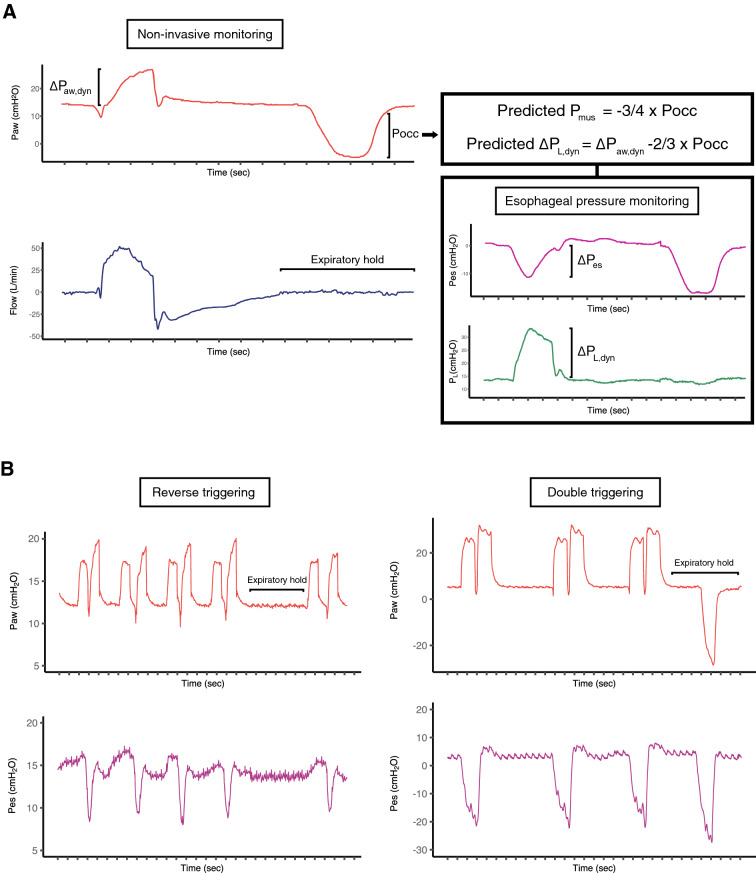Fig. 1.
Representative tracings showing a) the airway occlusion maneuver in a spontaneously breathing patient at rest, and b) two patients with double triggering; one resulting from reverse triggering and the other resulting from a dissociation between neural and mechanical inspiratory time. Airway pressure (Paw), flow, esophageal pressure (Pes), and transpulmonary pressure (PL) were recorded during the expiratory occlusion maneuver. Pocc represents the inspiratory swing in airway pressure against an occluded airway. ∆Pes represents the dynamic esophageal pressure inspiratory swing. The dynamic transpulmonary driving pressure (∆PL,dyn) represents the dynamic mechanical stress applied to the lung during inspiration. By applying previously validated correction factors, clinicians can use Pocc to estimate respiratory muscle effort (Pmus) and ∆PL,dyn. In panel b, during the expiratory hold, there is no respiratory effort from the patient with reverse triggering, signifying that the double triggering is occurring in the absence of spontaneous respiratory drive. Conversely, an inspiratory effort can be seen during the hold in the other patients’ tracing

